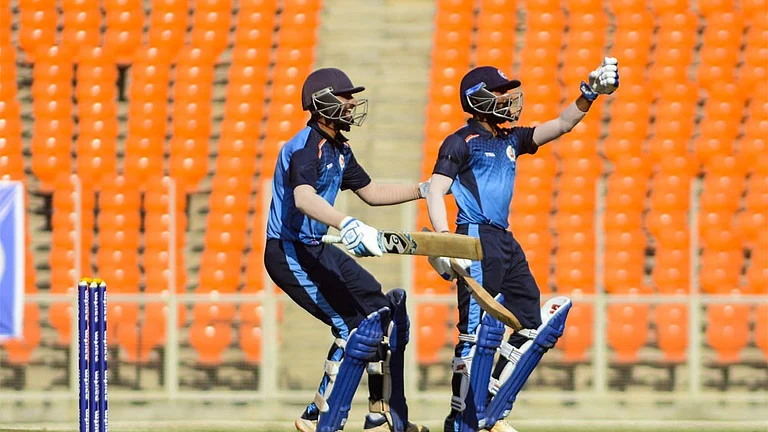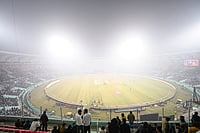Gas Politics And More At D6
- Reliance Unlikely to deliver promise of 80 mmscmd* output with production on decline; hit by government gas allocation for priority sectors
- Government Doesn't buy RIL's explanations, resisting pressure to raise gas prices before 2014
- Petro Ministry With the new leadership keen to probe reasons for decline in gas output, currently holding out to corporate pressure. Clearance for RIL-BP tie up on hold.
- DGH Exploration regulator raising many questions, but not yet able to establish credibility to monitor E&P work
- User firms Affected downstream firms like Essar and Jindal go to court on RIL's failure to deliver gas; high imported gas cost make projects unviable
* million metric standard cubic metres per day
***
This whodunit hasn’t been cracked for nine months now. The reasons behind the diminishing yield of natural gas from Reliance Industries’ D6 block in the Krishna-Godavari basin—India’s biggest gas find in decades—remain a mystery. As a senior petroleum ministry official enunciates, “being the first case of its kind, it is like finding a black cat in a dark room”. Only in this case, the answer lies buried deep under the seabed off India’s eastern coast.
Given that it’s the first deep-sea offshore block in the eastern coast in production, the petroleum ministry is willing to accept that there could be technical issues (that, in short, is RIL’s explanation). But charges of gold-plating of costs levelled by Anil Ambani (during his legal tussle with elder brother Mukesh) continue to linger. No wonder there is persisting suspicion in the ministry that all is not above board. When contacted, petroleum minister Jaipal Reddy only stated, “The DGH (Directorate General of Hydrocarbon) is looking into it.”
The government seems keen on finding out. It’s being careful too, given that the daily headlines are screaming corruption and crony capitalism. The gas issue was one of the main reasons for the change of guard at the petroleum ministry early this year. Even former petroleum secretary S. Sundareshan was shifted to the ministry of heavy industry last month to dispel the impression of India’s biggest conglomerate being favoured.
DGH, the exploration regulator, has been asked to “seriously” probe all the issues and processes. While the DGH was unwilling to spell out its concerns or plan of action to Outlook, official sources are careful to point out: “When DGH raises questions, it is levelling charges”. One such charge by the regulator is that “there is no geological or reservoir constraint to achieving gas rates”. In short, it’s RIL’s non-compliance with the approved development plan (requiring two more wells to be drilled) that has resulted in lower than expected production.
In its latest rejoinder (made available to Outlook), RIL has reiterated that the production dip is “due to reservoir behaviour”, and cautioned that if the technical challenges are overlooked “it would have resulted in huge capital expenditure which would be difficult to justify at a later date”, thus lobbing the ball back in DGH’s court. RIL declined to comment directly on the issue.
Pointing to plans to rope in energy major BP as its exploration partner, RIL has sought to convey that the problems at KG basin are complex, and require a higher level of expertise. Indications are that both the DGH and the ministry have not accepted this plea, which may delay the approval for BP picking up stakes in RIL exploration blocks.
In the interim, the empowered Group of Ministers (eGoM) last month took a significant though “unpalatable decision” of not allowing RIL to go in for pro-rata cut in gas supplies contracted to various parties and instead follow the government directive of protecting supplies to priority sectors like fertiliser, cooking gas, city gas, transport and power. Protesting against the cut in supplies, several industries like Essar Steel, Welspun and Jindal have registered cases against RIL (which has had to cut gas supplies to its own petrochemical plant and procure imported gas for captive use).
Imported gas is over double the price of domestic gas. Though that looks like a huge difference, one shouldn’t peg domestic gas prices against the prevailing (and rising) international prices. Apart from the higher price of spot cargo, re-gassifying liquefied natural gas (R-LNG) adds to imported gas costs.
Describing the eGoM action as “poetic justice” in case RIL is “deliberately cutting production to pressurise the government to raise gas prices” (fixed at $4.2 per million British thermal unit) ahead of the revision due in 2014, official sources rule out an early review. During a hearing, the Delhi High Court this week favoured the Essar Steel contention that the matter of dip in gas production should be referred to the eGoM, scheduled to meet later this month.
“It is not really understood why, despite the high RIL investment ($5.6 billion till December 31, 2010), we are still facing this situation,” says B.K. Chaturvedi, member, Planning Commission, who has asked the petroleum ministry to find out the reasons for the decline in gas production. Admitting to being “not satisfied with the answers”, Chaturvedi has asked the ministry to look into the matter more thoroughly. Chaturvedi points out that “many power plants and industries were set up based on RIL gas projections. What will happen to those investments is a matter of concern.”
But former finance secretary Ashok Chawla, who is heading a committee on utilisation of scarce natural resources, feels barring fertilisers, there is no justification for providing gas at regulated rates to other sectors. Denying reports that the government is being advised to raise the administered gas price in the short term for non-priority sectors, Chawla told Outlook, “The whole new regime should apply to new discoveries and new contracts and not to the KG basin and to other existing discoveries.” Chawla clarified that the report being submitted to the cabinet secretary suggests that while the government could continue with the present pricing policy during the 12th Plan (2012-17), it should “gradually exit from determining gas price except for the fertiliser sector”.
Market analysts are also not at ease, given that instead of production from D6 going up from 40 mmscmd to 80 mmscmd and further to 120 mmscmd, as per the ambitious projections made by the company, there is uncertainty about whether even current levels will be maintained. “Nobody knows the real reasons,” says a senior Mumbai-based equity investment analyst. “If the gas business does not deliver, the value declines.” RIL’s shares have fallen from Rs 1,180 two years ago to around Rs 900.
Given that the government would have to approve a higher capital expenditure to improve production from KG’s D6 block, the market is not comfortable with the prospects. There’s concern also as the government auditors “looking into the charge of RIL having not abided by the production-sharing contract” hope to have a report ready by the monsoon session of Parliament.
While the charge of gold-plating has not been proved, market experts worry that the gas issue will be held hostage to “the Anna Hazare factor”. In short, any further hint of corruption would hit investor sentiments. The regulator should be made more accountable and tasked to quickly root out the problem. Or, we would have to pay a heavy price—and not just for KG basin gas.


























